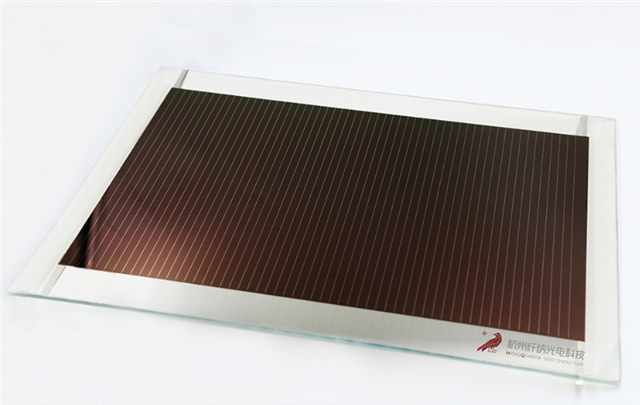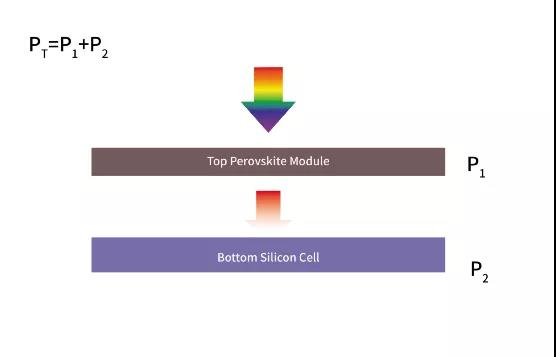Microquanta Semiconductor, a China-based perovskite solar cell manufacturer, claimed a new efficiency record for four-terminal perovskite-Si tandem module of 26.63%, in cooperation with China Three Gorges Group Research Institute. The result has been certified by China Telecommunication Labs (CTTL).

Source: Microquanta
The tested tandem module has an area of around 20 square centimeters.
The module is consisted of perovskite top cells and PERC bottom cells. Perovskite cells have contributed 16.86% efficiency, while PERC cells have contributed 9.77%.
The result demonstrates the compatibility of perovskite solar cells with traditional PERC cells. With cost control measures, the efficiency of large-area tandem cells has reached 26.63%, bordering on the lab efficiency of crystalline silicon cells.
The four-terminal perovskite-Si tandem module allows incident light to pass through perovskite top cells and PERC bottom cells in turn, so as to maximize the conversion rate of the incident light and increase power yield.

Silicon cells can absorb infrared light, while perovskite cells can make use of high-energy ultraviolet and visible light. The combination of the two cell technologies can achieve higher conversion efficiency and lower LCOE.
At present, most of the research is based on lab-scale tandem cells with an area of less than one square centimeter. The commercialization of large-scale tandem technology is still faced with many obstacles.
To further accelerate the commercialization of perovskite tandem cell technology, Microquanta have partnered with Three Gorges Research Institute in the R&D, mass production and application of high-efficiency perovskite-Si tandem cells and modules.
Since 2017 when Microquanta first broke the world record for perovskite solar modules, the company has renewed its record for seven times.
At the end of 2021, Microquanta set efficiency record for perovskite minimodule at 21.4%.
It is reported that the company will soon finish the construction of its 100 MW perovskite production line, which will be ready for mass production in the first quarter of 2022.


